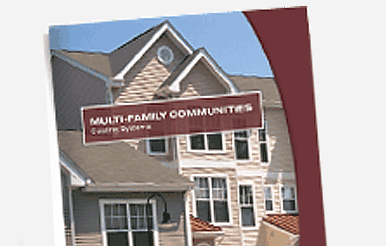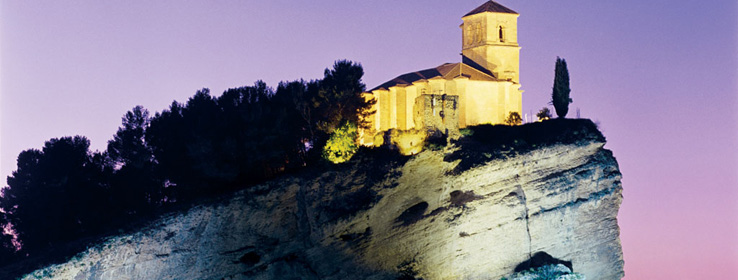Southern Spain, with its exotic fusion of European and Islamic influences, casts a sensual spell on modern-day design.
"There's nothing crueler in life than to be blind in Granada" goes an old saying about one of Spain's oldest and most spectacular cities.
The region's allure has captivated centuries of travelers, conquerors and inhabitants. Former President Bill Clinton, on a visit to Madrid for a NATO summit in the 1990s, detoured to Granada to re-experience the singular beauty he'd first encountered as a college student. Raving to reporters about the area's stunning Moorish architecture and jaw-dropping sunsets, he brushed off foreign-policy questions. "Don't work today," Clinton insisted. "Just watch!"
The design world has been doing just that: finding new inspiration in southern Spain's bold, distinctive color palette. This age-old aesthetic suddenly feels very modern – a celebration of the senses that ultimately engenders serenity.
"People are looking for something that feels visually rich," says color trend consultant Michelle Lamb, senior editor of the Trend Curve. "They want color that envelops them."
Visual Feast
There's no doubt that Spain's Andalusia region – which includes Granada, Seville, Córdoba and the Costa del Sol – offers an unparalleled feast for the eyes: farmhouses painted yellow, vivid against a clear blue sky; the luminous honeycomb stucco of Granada's Alhambra palace; freshly fallen oranges carpeting the streets of Seville; shady stone courtyards where fountains and bougainvillea spill over cool blue and white tiles.
This heady mix of colors and textures is a response not only to the region's intense sunlight and fresh sea air, but to its rich history of cultural cross-pollination. The Islamic rule of Spain that began in A.D. 711 produced dizzying scientific and artistic triumphs, and introduced the West to olives, almonds, oranges and rice.
Long after the European reconquest of the region, the cherished traditions of Moorish (or Hispano-Muslim) culture remain alive – among them a sense of hospitality and sensuality, and an uncanny ability to enjoy simple pleasures luxuriously. In the words of travel writer Chris Stewart, whose farm in Andalusia became the subject of the best-selling "Driving Over Lemons" series: "The Arabs would have it that even if your worst enemy should get up early in the morning to come round to your house and kill you, you must first offer him a good breakfast."
That promise of well-being – at least while coffee is served – is the key to Andalusia's richly varied color palette. Whether it's the hot fuchsia of a silk cloth stretched across a bed canopy, or a gray-white wash on a cottage wall, the region's hues reflect a deep awareness of earth, air and sea.
Inside Out
Moorish color and design philosophy calls upon tone and texture to evoke nature, not to trump or ignore it like many formally designed Western interiors, which often rely on artificial light and air.
Andalusian spaces are built with a sense of what's beyond their walls. Wooden fretting (mousharabiya) lets in daylight while blocking out harsh glare; minimal furnishings, as well as stone floors and tile borders, are used both inside and in gardens and porch areas to express a less rigid distinction between indoor and outdoor space; houses are painted vivid colors to retain visual definition despite the region's intense light. (Along the Spanish coast, legend has it that fishermen's wives painted their homes in striking color combinations so husbands could recognize their homes far out to sea.)
Western interiors have tended to shy away from bold, sensual color, but the Andalusian approach appears to be catching on. Over the last few years, strong color has been gaining ground, according to Lamb. "Color has grown to be acceptable in a way that it wasn't 10 years ago." Andalusian style calls for a change in
color intensity, and in outlook. "We're modernists," says Susan Sully, author of New Moroccan Style: The Art of Sensual Living, an architectural celebration of the North African country that served as the portal of Islamic influence in Spain.
"Everything in America is machine-made and perfect. After awhile that loses its excitement. The Hispano-Muslim style is appealing because it's rooted deeply in time, in centuries-old traditions."
Sully cites the craftsmanship and appreciation for natural materials displayed in thick Berber rugs, carved wooden doors and wrought-iron grilles featuring plant motifs. "So much is still handmade in this part of the world," Sully says. "We miss that in our culture."
Interior designer Bonnie Birnbaum found inspiration in Spain while working on a recent show house project in St. Paul, Minn. The century-old mansion's redesigned kitchen now features a spectacular swirling helical ceiling design modeled after a ceiling Birnbaum saw in Spanish architect Antoni Gaudi's Casa Batlló, famous for its organic form and coral-reef-inspired colors.
Flowing From Nature
"Gaudi was working in the Art Nouveau mode, which used shapes that flowed out of nature," she explains. "It was really a rebellion against industrialization. Art Nouveau looked back to the Middle Ages: When people made a product, they made a whole product, often by hand."
Hispano-Muslim style doesn't have to feel nostalgic or excessively theatrical. "It's not about imitating the 'ethnic craze' of the '60s," says Sully, referring to the decade when Morocco became a destination for rock stars and experimental authors. "For me, the appeal of this style is its combination of unexpected qualities: sensuality and serenity, exoticism and minimalism." And because it developed out of a m+¬lange of cultures, the Andalusian aesthetic lends itself to eclecticism. The right contrasting wall color can heighten awareness of the feel of wood, leather or velvet antique furniture and play up a space's particular quality of light. Painting a fireplace a contrasting color from its surrounding wall can draw the eye to the texture of its bricks, or even its wooden mantel.
The spirit of Andalusia can inspire rewarding design choices in any climate or context. "Wherever you live, it's always possible to have a more natural relationship with the environment around you," Sully says. "This style teaches us to reconnect with the elements."










